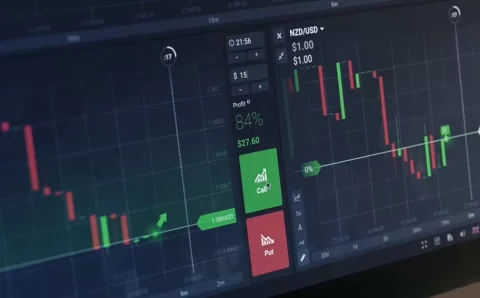The monetary policy committee (MPC) members of the Reserve Bank of India (RBI) saw economic recovery happening, but external environment posing a risk to the inflation front, causing a data dependent approach, minutes released on Friday showed.
The six-member MPC, after three days of deliberation, kept the policy rate and stance unchanged. The repo rate continues to be at 4 per cent, reverse repo at 4.35 per cent, and the stance at accommodative.
RBI governor Shaktikanta Das emphasised that while the central bank remained “laser-focused” to bring back consumer price index (CPI) inflation a 4 per cent, during the last eighteen months, the priority has been to “revive growth and preserve financial stability.”
There is a slack in the economy, and the RBI governor expected it to exceed the pre-pandemic level of output only in the third quarter of 2021-22. “While the recovery is gaining traction and aggregate demand is rebounding, the economy still operates below the pre-pandemic level,” he said.
“Durable recovery in manufacturing and services sectors should support revival in the informal economy. The future trajectory of growth, however, is strewn with many challenges, most notably from how the pandemic will evolve. Overall, growth remains critically dependent on policy support and needs nurturing for sustained recovery,” the governor said.
In this context, continued monetary support is necessary as the economic recovery process even now is “delicately poised and growth is yet to take firmer roots.”
“At this critical juncture, our actions have to be gradual, calibrated, well-timed and well-telegraphed to avoid any undue surprises,” the governor Das said.
RBI deputy governor Michael Patra said inflation should soften as food prices ease further, but there are repeated shocks which the central bank must remain guarded against. The transitory shocks should not lead to a more permanent second round character, he warned.
“In my view, the biggest risks to India’s macroeconomic prospects are global and they could materialise suddenly,” Patra said. “While the trajectory of inflation may undershoot the projections made in August, it is likely to be uneven, sluggish and prone to interruptions,” the deputy governor said.
The sole dissenter in the group, Jayanth R Varma, who favoured a reverse repo hike and voted against the accommodative stance, said the ongoing transition to green energy worldwide “poses a significant risk of creating a series of energy price shocks similar to that in the 1970s.”
There are also risks to global growth because of the emerging financial sector issues in China, which is reminiscent of Japan of the late 1980s.
“Both of these risks–one to inflation and the other to growth–are well beyond the control of the MPC, but they warrant a heightened degree of flexibility and agility. A pattern of policy making in slow motion that is guided by an excessive desire to avoid surprises is no longer appropriate,” Varma said.


RBI executive director and head of monetary policy department, Mridul K Saggar also warned of “significant headwinds” from the shifting global macro-economic conditions.
“These (global policies) can have significant spillovers and spillbacks running through trade, financial and market expectations channels. They can alter the domestic macroeconomic balances and cause spells of volatility clustering over a year or more,” he warned, even as he was confident that the country has enough buffers to see through these headwinds.
In a flexible inflation targeting framework, the RBI has to remain conscious about exchange rate dynamics originating from exogenous shocks.
“Policies will need to respond with alacrity and should be untangled from any pre-commitments. If at all some guidance is needed at this stage, it has to be a soft one,” he said. The RBI must prepare the markets about adjustment in liquidity levels even as policy remains accommodative.
The central bank has to remain committed to “goal dependence and instrument independence,” he said. If no new disruptions to growth emerge, “output gap will close sometime in 2022-23 and monetary policy should start to gradually reposition to lowering underlying inflation and inflation expectations next year, especially if inflation edges up from the energy and services side amid sticky goods core inflation,” Saggar said.
If oil prices average $80/barrel or more in the second half, it can tentatively raise inflation by 15-20 basis points and lower growth by 13-15 basis points. Such oil prices will have negligible effects on fiscal subsidies and widen current account deficit by about 0.25 per cent of the gross domestic product, Saggar said.
“Tax cuts on petroleum products are essential to break the upward movement that could impart persistence to domestic inflation,” said external member Ashima Goyal, adding, “with some growth recovery, but more to go, and one year ahead inflation expected at about 5 per cent, a real policy rate of about -1 per cent is appropriate.”
The current prices include “large uncertainty” due to speculative element. Therefore, “large sudden falls are therefore possible.” Policy has to be data based, she said, while liquidity has to be kept in sufficient level while reverse repo is raised gradually.
While the policy must be supportive, “over-stimulus as after the global financial crisis, with delay resulting in sharp adjustment, has to be avoided,” Goyal said.
External member Shashanka Bhide said indicators now point to recovery of economic activity from the severest shock of the second wave of the Covid 19 pandemic in the first two months of the financial year.
“While return to the pre-pandemic level of economic activity is to be expected when the restrictions on the supply side are liberalised, pace of this return to normalcy would depend on the factors affecting supply as well as demand,” Bhide said.





